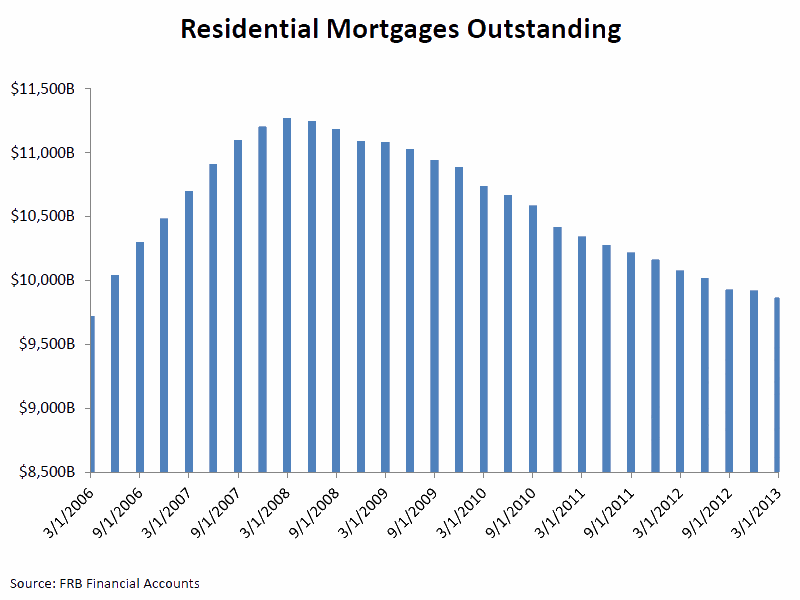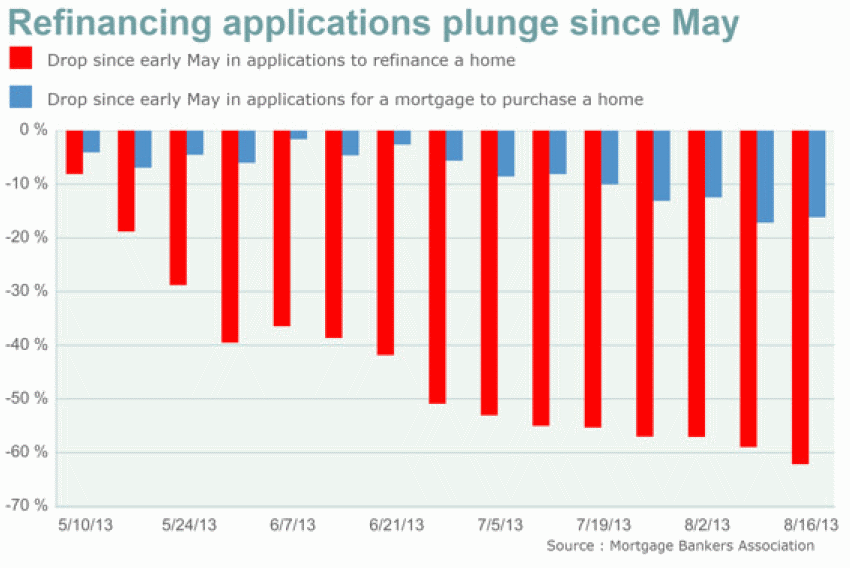Darrin Benhart, Deputy Comptroller for Credit and Market Risk, Office of Comptroller of the Currency (OCC) said in a speech on Wednesday that the banking industry has a good deal of data to be optimistic about. But, he told the Mortgage Bankers Association's Risk Management and Quality Assurance Forum his purpose was not to talk about opportunities but rather about risk.
Despite the progress we've seen, he said, the overall forecast for the banking industry reflects slow growth in revenue and core profits. Low interest rates, narrow loan demand, and lower fee income hinder stronger revenue gains and historically low short-term interest rates continue to squeeze net interest margins. The recent uptick in longer-term rates has heightened concerns about increasing interest-rate risk and has significantly slowed the mortgage refinance market.
OCC highlighted three key risk themes in its most recent Semiannual Risk Perspective that banks should understand and seek to mitigate. First, strategic risk continues to increase as bank management searches for ways to generate acceptable returns, often looking to new products and services that can present unfamiliar risks they are not prepared to manage. Specific to the mortgage industry, more players, especially some community banks, are entering the mortgage origination business to generate loan volume and more fee revenue and banks are strategically reducing or eliminating servicing in response to heightened compliance expectations and earning considerations.
Second there are challenges that arise in a period of sustained but slow growth as many banks and investors begin to "chase" yield, often taking on more interest rate or credit risk to maximize return. We are beginning to see signs of the classic cyclicality in banking where traditional lagging indicators are improving so bankers start to layer risk back into the system, he said. One example is that the rate for jumbo mortgages, a traditionally riskier product, recently dipped below that of conforming mortgages.
Third is the area of operational risks and those growing in the system today are increasingly sophisticated cyber threats, expanding dependence on technology, and changing regulatory requirements. As some of the failures that caused the focus operational risk came from the mortgage industry he told the group, that may have given their industry a leg up in appreciating operational risk over other lines of business.
He said the new mortgage regulations have risk management implications. The list of mortgage related reforms is extensive, ranging from updates to Regulation Z, Regulation X, compensation parameters, appraiser independence, to two of the most significant reforms, Qualified Mortgage (QM) and servicing standards. An additional rule, the Qualified Residential Mortgage (QRM), is still being revised and reformulated.
He told the audience that in planning for reforms they will need an even greater emphasis on risk management techniques that not only look at credit risk but also encompass operational and compliance risk. A key part of planning needs to include the build-out of a strong risk management function to ensure compliance with the new rules.
In the past, credit risk, operational risk, compliance, audit, and quality control functions sometimes worked in silos. As a result, the systemic nature of problems across different products, platforms, or risk areas often went unnoticed until the issue was significant. Risk management groups today need to be multi-dimensional, and banks need a culture that promotes risk identification across business lines. Complying with the new rules doesn't negate the need for having other safety and soundness controls in place. For example the QM standard establishes an ability-to-repay safe harbor, but it does not address other relevant underwriting criteria such as loan-to-value (LTV) or credit history, key drivers of long-term loan performance.
The recently re-proposed rule about QRM has some very significant changes as a result of the thousands of comments regulators received, most importantly the alignment of QRM with the CFPB's QM. This so-called QM-plus approach, uses the core QM criteria to define QRM but requires lenders to evaluate three more aspects of the loan's underwriting; the first-lien status of a borrower's principal dwelling, a 70-percent LTV and assessment of a borrower's credit history.
In other areas, the unprecedented runoff in residential mortgages is moderating, Benhart said. The contraction of residential mortgage credit had extended from the second quarter of 2008 through the end of 2012, and the total volume is down 12 percent since peaking at over $11 trillion at the end of March 2008.

This contraction was driven both by purposeful reduction of household debt through payoffs and, more significantly, through elevated defaults. These effects far outweigh any increase in new mortgage demand. Although existing home sales have shown recent growth, these sales often result in a transfer of debt, rather than new growth.
Mortgage originations have improved13 since the financial crisis but have begun to slow as mortgage rates ticked up; applications for refinancing have dropped 62 percent since May and applications for loans to purchase a home have fallen 16 percent.

As regulators, Benhart said, we focus not only on trends in originations but also on the performance of existing loans and in recent years this has served more as an anchor than an engine of growth. This however appears to be turning around. Last year the housing market showed increased investor demand and decreasing inventories. New home supplies are at 50 year lows and many market are back in balance as the overhang of distressed mortgages decreased.
The S&P/Case-Shiller National Index shows home prices up over 10 percent year-over-year through June 2013 although prices remain well below the 2006 peak, and distressed sales continued to account for a large percent of sales. Home price appreciation in some large cities is increasing at a pace that is not consistent with other economic indicators. This raises potential questions about its sustainability, a factor 0CC will be monitoring.
There has been steady improvement in the performance of mortgages serviced by the banks and savings associations and OCC's numbers for the end of the first quarter of this year showed slightly more than 90 percent of mortgages were current and performing, the highest percentage since the third quarter of 2008.
Seriously delinquent mortgages also fell to 4.0 percent of the overall portfolio, the lowest level in five years, but the more than 900,000 loans in the process of foreclosure remain a significant risk to the housing recovery, especially in judicial foreclosure states.
The performance of junior liens is another concern. Delinquencies here have remained relatively steady however they may soon move sharply upward as a significant number of HELOC loans reach the end of their draw period and monthly payment requirements will increase as amortization kicks in.
HELOC - End of Draw:

Benhart pointed out other areas on which OCC plans to focus in the coming year. He said they have done extensive work in the largest institutions to assess the HELOC risk mentioned earlier and these institutions are in varying stages of responding to the risk. OCC has stressed that banks offering HELOC products should establish processes to quantify and address this risk of increased delinquencies and losses.
Collateral valuation is also a concern. The industry has focused over the last several years on modifications, foreclosures and servicing issues and appraisals and valuations didn't get much attention. OCC competed reviews of a number of institutions and found week governances of these programs. Concerns ranged from those about the qualifications of responsible personnel to a lack of audit or internal control functions. OCC found oversight lacking for appraisal management companies and shortcomings in the development, reporting, and review of evaluations. Prepackaged products, some of which claimed to be "guidelines compliant," lacked even the basics-no opinion of "market value," unsigned and undated reports, even generic assumptions about the actual physical condition of the property, items.
Lastly, OCC found deficiencies in the review process for both appraisals and evaluations. Problems ranged from independence, qualifications, and training of reviewers to the scope and depth of reviews.
Benhart said in summary, the condition of mortgage lending is a mixed bag: improvements in first-lien performance, some growth on the horizon, but significant headwinds from growing risk associated with junior liens, elevated delinquencies and higher interest rates.







